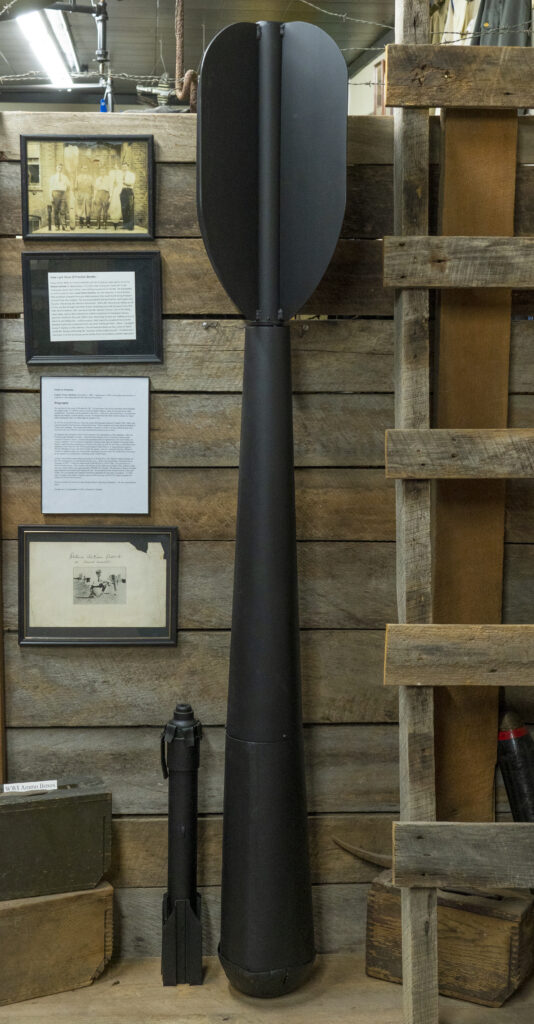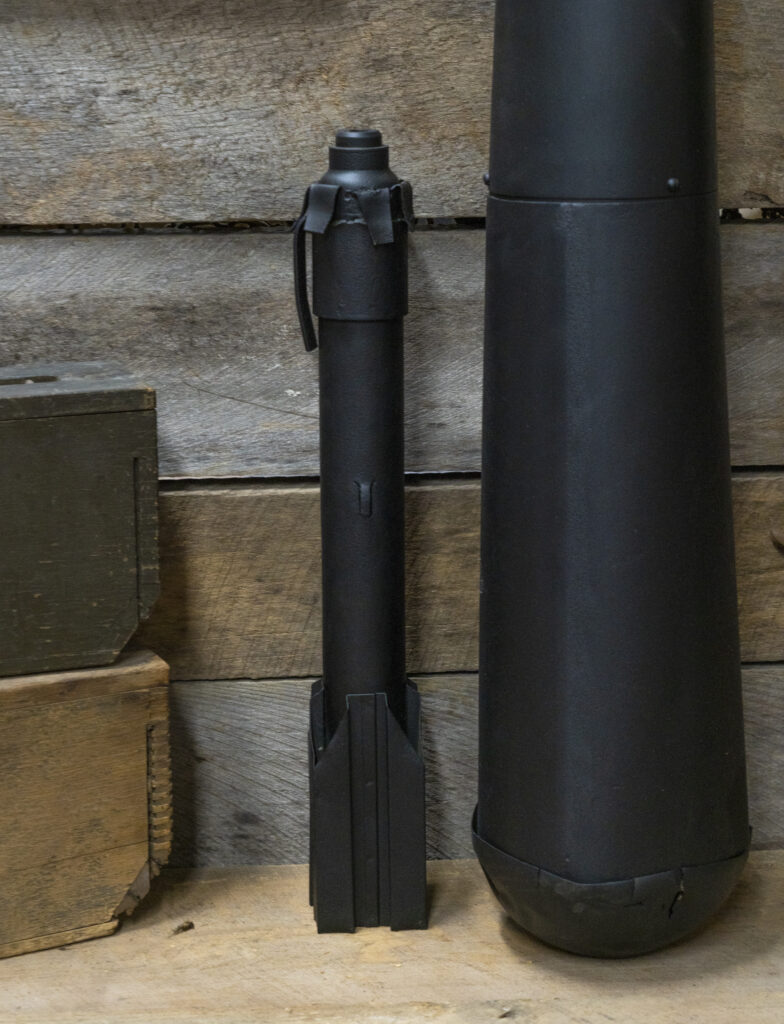

Lester Pence Barlow was an early inventor of some of the first aerial bombs used in combat. Born in 1882, Barlow joined the US Navy in 1904 at the age of 18 and helped build the first wireless station on Guam during radio’s early infancy. After leaving the Navy four years later, he worked as a transportation engineer for a chemical mining company in the Baja Peninsula of lower California. In 1914, he joined the army of Pancho Villa during the Mexican Revolution, where he gained an interest in explosives and developed the idea of dropping explosive devices from airplanes. Barlow left Villa’s army and returned to the US, where he began working for the War Department and patented his ideas for aerial bombs. Those patents were kept secret during the Great War, where the US used approximately 500,000 of Barlow’s bombs. He received no payment for his weapons work until in 1940, after a lengthy legal battle, Congress approved a payment of $529,719 to the inventor. These two black practice bombs were acquired from Edward Barlow, Lester’s son, in 2019. The small black practice bomb was intended to be dropped by hand out of the cockpit of a World War I-era plane.
